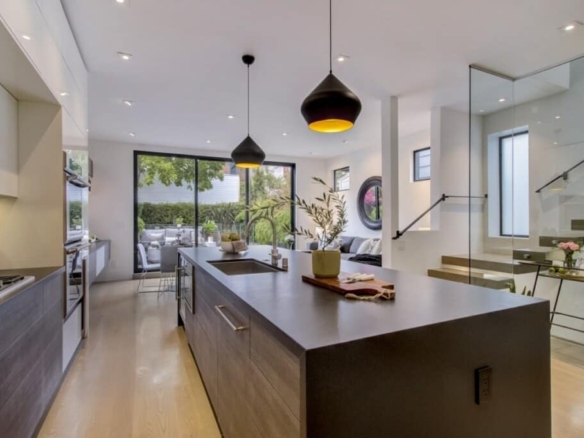
Let’s face it, clutter happens to the best of us. Piles of mail, overflowing closets, and that random collection of “maybe I’ll use it someday” items can quickly make your home feel smaller and more chaotic than it really is. That’s where smart declutter tips come in.
In this Redfin guide, we’ll show you practical, budget-friendly ways to reclaim your space, simplify your daily life, and actually enjoy being at home. Whether you’re cleaning out your home in Portsmouth, VA or Wilson, NC, these tips will help you turn any room from cramped to calm—without spending a fortune.
1. Start with a clear plan
Jumping into cleaning without a decluttering checklist is like grocery shopping while hungry. Chaos guaranteed. A plan keeps you focused and makes the process less overwhelming.
Declutter tips to set yourself up for success:
- Make a quick to-do list: Jot down what you want to tackle today versus later so you can see progress without feeling rushed.
- Set a timer: 20–30 minutes keeps it manageable and prevents burnout.
- Gather your tools: Donation bag, recycle bin, trash bag. A playlist that pumps you up counts as a tool too.
2. Tackle one area at a time
Trying to declutter the entire house in one day will leave you frustrated. Focusing on a single space makes the task manageable and less overwhelming. When you work on one area at a time, you see results quickly, and that progress builds momentum.
To stay focused:
- Choose a small space first: A desk drawer, a bathroom shelf, or a corner of your closet.
- Finish before moving on: Resist the urge to jump between rooms.
- Celebrate small wins: Each cleared space is progress, and progress adds up.
3. Use the 4-Box Method
When you hit that “should I keep this or not” wall, the 4-box method is your best friend. Instead of second-guessing every single item, you have clear categories that make the decision for you. It turns a stressful process into something simple and even a little satisfying.
How to declutter with the 4-box method:
- Keep: The things you use often and cannot imagine living without.
- Donate: Items in good shape that deserve a second life with someone else.
- Recycle: Anything that should not go in the trash but is not useful to you anymore.
- Trash: The broken, outdated, and “why do I even own this” stuff.
We spoke with Michael Black, Vice President and GM at Clutter, a moving and storage company that provides innovative and flexible solutions, for expert tips on how to declutter effectively. “Make your belongings visible again. Pull everything out by category—seasonal gear, clothes, décor—and decide what you need to keep, store, or let go of. Use clear bins and simple labeling to keep track of what’s stored away. When you’ve truly run out of home space, a service like Clutter can take the heavy lifting out of it by cataloging every item online so you can see exactly what you have and request a return with just a tap.”
4. Maximize vertical and hidden storage
Clutter loves flat surfaces. Counters, desks, tables; they all attract piles if you are not careful. The trick is to think upward and inward, using vertical and hidden storage to keep things out of sight and off the surfaces you use every day.
For smarter storage:
- Go vertical: Add shelves, hooks, or wall organizers to free up floor and counter space.
- Think hidden: Storage ottomans, under-bed bins, and baskets keep items close but invisible.
- Use what you have: Repurpose boxes, jars, or containers before buying new storage solutions.
“You don’t need expensive renovations to make a small space feel bigger—you just need a shift in how you use what you have,” suggests Michael Black. “Our advice is always to think vertically: add hooks behind doors, stack bins on shelves, and make smart use of under-bed space. Group similar items together and label clearly; you’ll find what you need faster and feel like you’ve instantly doubled your square footage. Keep only what you use day-to-day nearby, and store seasonal items elsewhere.”
5. Declutter your closet and clothing
Closets are often the sneakiest sources of clutter. Clothes you have not worn in years still hang there, shoes sit untouched, and old favorites take up space even though they no longer fit your life. When you clear out what you do not wear, you make room for the pieces you truly love.
Tips to help declutter your room:
- Follow the one-year rule: If you have not worn it in the last 12 months, it is time to let it go.
- Check for fit and comfort: Keep only what feels good and works for your current lifestyle.
- Sort as you go: Create piles for keep, donate, and recycle instead of tossing everything back in.
“For closets, edit seasonally. Store off-season clothing in labeled bins so your closet holds only what you wear right now. Vacuum-seal soft items to save space, and use high or hidden areas like upper shelves for things you’ll revisit next season,” Michael Black recommends. “Affordable storage isn’t about adding more containers; it’s about creating a system that keeps your home feeling light and functional.”
6. Clear kitchen and pantry clutter
The kitchen is the heart of the home, but it is also where clutter multiplies fastest. Expired food hides in the back of the pantry, gadgets you never use take up counter space, and duplicate utensils pile up in drawers. Clearing the excess makes cooking easier and keeps your kitchen feeling fresh.
Declutter tips for the cleaning the kitchen and pantry:
- Check expiration dates: Toss anything past its prime and rotate what is left so nothing gets lost again.
- Streamline gadgets: Keep the tools you use often and donate the rest.
- Group like items: Store snacks, baking supplies, or canned goods together so you always know what you have.
“In kitchens, treat your countertops as premium space,” Michael Black says. “Keep out only what you use daily, and organize the rest by category—appliances, cookware, pantry items—to avoid duplicates.”
7. Streamline the living room
The living room should feel inviting and cozy, not crowded. Over time, it becomes a landing spot for remote controls, magazines, knickknacks, and random items that never seem to find a home. Simplifying this space helps it feel open, comfortable, and easy to relax in.
Declutter tips for the living room:
- Limit surfaces: Keep coffee tables and shelves from becoming drop zones by giving each item a designated spot.
- Edit decor: Choose a few pieces you love instead of filling every corner with decorations.
- Contain the extras: Use baskets or bins for remotes, blankets, and other everyday items to keep them accessible but out of sight.
8. Optimize garage, basement, or storage spaces
Garages and basements are notorious for becoming catch-all zones. Old sports equipment, half-used paint cans, and boxes you have not opened in years pile up until the space feels unusable. By organizing these areas, you reclaim valuable square footage and reduce the stress of digging through endless clutter.
Helpful tips to keep storage spaces clear:
- Sort by category: Group tools, seasonal décor, sports gear, and keepsakes, so everything has a clear place.
- Use vertical storage: Shelving units and wall hooks free up floor space and keep items visible.
- Label everything: Clear bins with labels make it easy to find what you need and avoid buying duplicates.
“The best way to handle seasonal or rarely used items is to store them intentionally, not indefinitely,” advises Michael Black. “Group items by type, pack them in clear, labeled bins, and use high or hidden areas for seasonal storage. When home storage is maxed out, a managed digital service like Clutter can catalog your items so you can view and request them back anytime.”
9. Incorporate affordable storage solutions
You do not need fancy custom closets or expensive furniture to stay organized. Affordable storage solutions can make a big impact without stretching your budget. The key is to be creative and use what works best for your space.
Budget-friendly storage ideas:
- Repurpose containers: Glass jars, shoe boxes, or baskets can hold everything from pantry items to office supplies.
- Shop smart: Dollar stores and discount shops often have bins, trays, and dividers that do the job.
- Consider off-site storage: Storage units can help free up space at home while keeping your belongings accessible.
10. Maintain a clutter-free lifestyle
Decluttering once is powerful, but keeping it that way is what transforms your home long term. Clutter has a way of creeping back in if you do not stay intentional. A few simple habits can help you maintain the progress you worked hard to achieve.
Declutter tips for staying clutter-free:
- One in, one out: When something new comes in, remove something old.
- Do quick check-ins: Spend five minutes a day putting items back where they belong.
- Be mindful of purchases: Before buying, ask if you really need it and if it has a place in your home.
“Clutter does not build up overnight, and it will not disappear that way either. The secret is consistency. Spend just five minutes each day doing a quick reset and create drop zones for items that tend to wander,” Michael Black shares. “If certain things always end up in your ‘deal with later’ pile, consider rotating them out through a digital storage service like Clutter, where everything remains organized, accessible, and out of sight until you need it again.”
Final declutter tips to maximize your home’s space
Decluttering doesn’t have to be overwhelming or expensive. By using these top declutter tips, you can create a home that feels more spacious, organized, and enjoyable every day. Remember: small, consistent actions add up to big results over time. Start with just one tip today, and you’ll be amazed at how much room you can reclaim.
The post Top 10 Declutter Tips: Smart and Affordable Ways to Maximize Your Home’s Usable Square Footage appeared first on Redfin | Real Estate Tips for Home Buying, Selling & More.





Join The Discussion